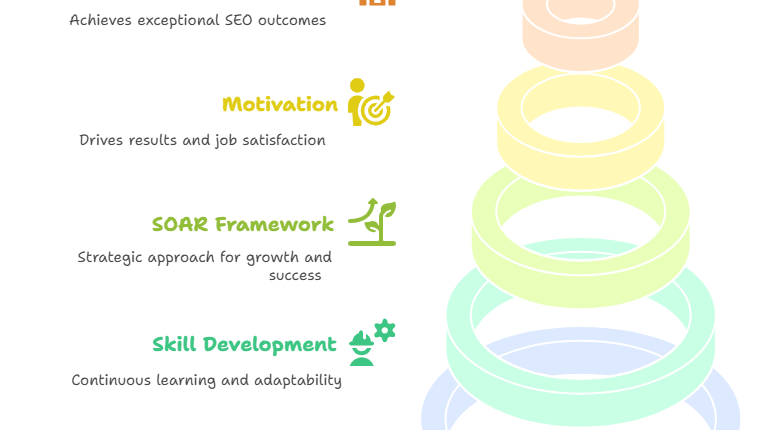
SEO Careers in the Age of AI: Embracing Change
As we navigate the transformative landscape of artificial intelligence, SEO professionals are presented with unprecedented opportunities and challenges.
Travis Tallent emphasizes the importance of adapting through a systematic approach known as the SOAR framework—Streamlining processes, Orchestrating teams, Automating tasks, and Repositioning focus.
The Role of Technology in Shaping SEO

Reflecting on the early days of the internet, Tallent draws parallels between the skepticism surrounding new technologies then and today’s hesitation toward AI.
Just as not everyone saw the potential of the internet in the 80s, some remain wary of AI’s impact on industries. However, the key lies in understanding and harnessing these technologies to gain a competitive edge and drive career growth.
Balancing Automation with Human Insight
One of the primary goals for SEO professionals is to leverage AI to enhance their work without losing the human touch that is vital to marketing.
By automating routine tasks, teams can redirect their creative energies towards strategic initiatives that require nuanced interpretations of human behavior and market trends. This balance is essential for fostering innovative approaches that resonate with today's consumers.
Creating High-Performing SEO Teams

Building a robust SEO team in the AI era means focusing on collaboration and skill development. The SOAR framework encourages leaders to promote a culture of learning and adaptability among team members, equipping them with the tools necessary to excel in a fast-evolving environment.
A motivated team not only drives better results but also enhances job satisfaction.
Future Trends in SEO
Looking ahead, SEO professionals must stay informed about emerging trends in AI technology that can shape their tactics. From advanced data analytics to machine learning algorithms, staying ahead of these innovations will position them as leaders in their field.
Understanding the implications of AI on SEO practices will also help in predicting market changes and adapting strategies accordingly.
In conclusion, as we embrace AI in our SEO careers, it's clear that adaptability, a focus on team collaboration, and an understanding of technology’s role in shaping our strategies will be essential for success.
 Add Row
Add Row  Add
Add 




Write A Comment